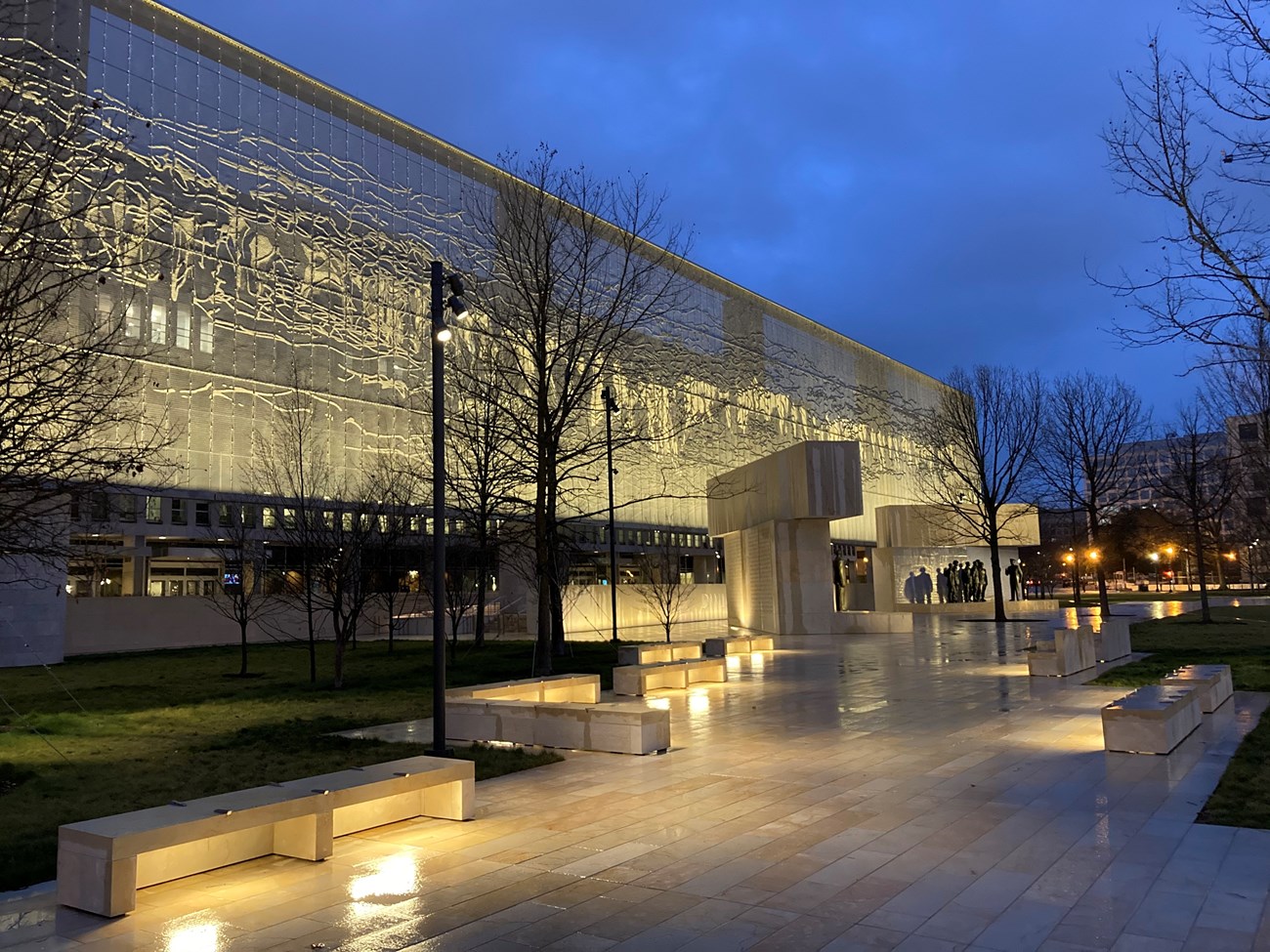Last updated: November 8, 2023
Article
NAMA Notebook: Changing Seasons and Meanings
The Education Team has worked at National Mall and Memorial Parks for many years. One reason that keeps us here is the variety of stories we get to share. The National Mall is constantly changing to continue telling America’s history.
Adding New Memorials

NPS
In 2020, the park added a memorial to Dwight D. Eisenhower. Located on Independence Avenue, across from the Air and Space Museum, the memorial highlights multiple aspects of his life from his youth to his role as general and then president.
Memorials provide opportunities to engage students on questions of history, art, and symbolism. While this site connects directly to World War II and the Cold War, there are many thought-provoking conversations for your classroom.
Unusual to a presidential memorial is inclusion of that leader’s childhood. Here you find a statue of young Eisenhower reflecting on the importance of his hometown, Abilene, Kansas.

NPS
After winning World War II, Eisenhower returned for a visit to Abilene. A piece of the speech he gave there is included in the memorial. Have students read this portion and think about how one’s hometown might shape one’s future and how as a young person you can’t always imagine where life will take you.
"Because no man is really a man who has lost out of himself all of the boy, I want to speak first of the dreams of a barefoot boy. Frequently, they are to be of a street car conductor or he sees himself as the town policeman. Above all, he may reach to a position of locomotive engineer, but always in his dreams is that day when he finally comes home. Comes home to a welcome from his own home town. Because today that dream of mine of 45 years or more ago has been realized beyond the wildest stretches of my own imagination, I come here. First, to thank you, to say the proudest thing I can claim is that I am from Abilene."
Have students consider what they want to do in the future at the beginning of the school year and look back on those dreams at the end of the year. Eisenhower spoke of how he could never have imagined growing up and leading the military through a world war. This lets students see that all hopes are possible.
History teachers can use the other statues to explore Eisenhower’s work. Have them compare the photo of Ike talking to troops before the D-Day invasion with the statue in the memorial. Listen to audio of Eisenhower’s D-Day speech to better understand the stress of this engagement.

Library of Congress and NPS
I am struck here by the contrast of General Eisenhower and President Eisenhower. The memorial emphasizes the President as someone working for peace. He is elected after saying he would end the war in Korea. A large feature of the memorial is the tapestry, representing Pointe du Hoc, the beaches of Normandy, scene of the D-Day invasion in 1944. But the tapestry represents Normandy in peacetime. Have students contemplate the irony of Eisenhower the general and Eisenhower the peacetime President.

NPS
If your class is studying the 1950s, have students examine the Eisenhower Memorial surroundings. All around the memorial are buildings that represent elements of Eisenhower’s administration. The Air and Space Museum relates to the start of NASA during the 1950s. Education was important to Ike. That’s the Department of Education right behind the tapestry. Other nearby buildings include the Department of Health and Human Services, Federal Aviation Administration, and Voice of America. Have students research the connections between these organizations and Eisenhower.
Columbus Circle
While new memorials are built, sometimes the meanings of old memorials change. There’s a memorial in front of Union Station built to honor Christopher Columbus. Dedicated in 1912, it was meant to celebrate the contributions of Italian Americans. Nowadays, Columbus isn’t as recognized for his discovery, especially when considering how Indigenous people were treated. The attitude toward Columbus can impact how his memorial is perceived. Have students consider how a memorial’s meaning is a product of the time it is built and how that can change over time.

NPS
October marks Eisenhower’s birthday, the Columbus Day holiday, and the change of seasons. It serves as a good time to look at how the National Mall has changed over time with the creation of new memorials. Change also comes in the way these places are reinterpreted and remembered over time. Hope this inspires your students to engage in conversations about the meanings and history of memorials.
